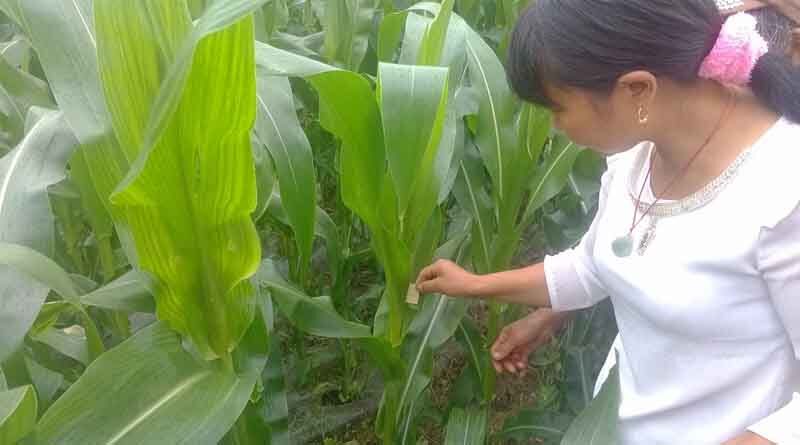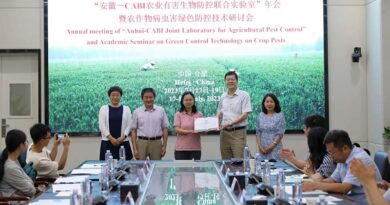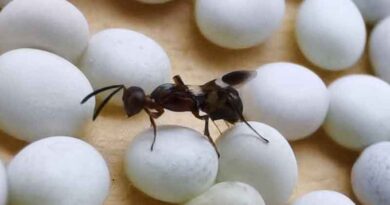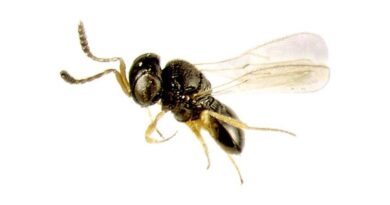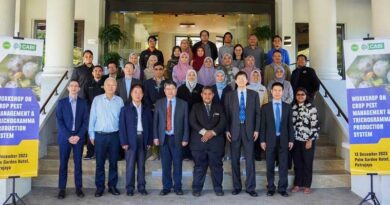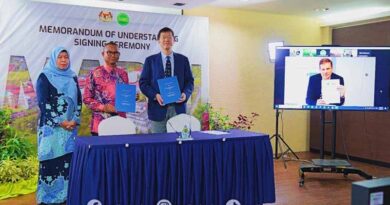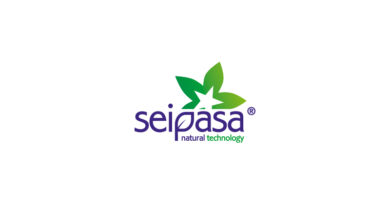Study shows toxicity of chemical pesticides used in maize against natural enemy of Asian corn borer pest
18 August 2022, China: A new study has determined the compatibility of chemical pesticides – commonly used by maize growers – with the natural biological control Trichogramma ostriniae (Hymenoptera: Trichogrammatidae), an egg parasitoid of the Asian corn borer pest.
The research, co-authored by CABI with the Chinese Ministry of Agriculture and Rural Development (MARA) – CABI Joint Laboratory, provides valuable results which can be used to design an integrated pest management plan combining chemical pesticides applications with augmentative releases of T.ostriniae wasps against maize pests.
The scientists, which included Dr Feng Zhang, CABI’s Regional Director, East & South-East Asia, sought to test the lethal and sublethal effects and residual toxicity durations of various pesticides including four herbicides (pendimethalin, topramezone, glyphosate, and atrazine), three insecticides (imidacloprid, emamectin benzoate, and ethiofencarb) and three fungicides (propiconazole, benzoyl cyclazole, and difenoconazole).
They wanted to discover, under laboratory conditions, residual toxicity to adult parasitoids, the lethal effect of the pesticides on the parasitoid’s eggs inside the host egg, and on the reproduction of the parasitoid’s female offspring.
As outlined in the journal Ecotoxicology and Environmental Safety, the researchers found that the safe interval between pesticide applications and releases of T.ostriniae is between two to three weeks. Caution is needed in interpreting the laboratory bioassay data because abiotic factors such as rain, sunlight, wind, and dew might affect the impact of pesticides in the open-field conditions.
Three tested pesticides, including ethiofencarb, glyphosate, and benzoyl cyclazole were slightly harmful to T. ostriniae adults, whereas the other seven pesticides were moderately harmful.
The pesticide residues of ethiofencarb, and emamectin benzoate, showed slightly persistence of toxicity to T. ostriniae adults, in contrast to the remaining pesticides.
Glyphosate, emamectin benzoate, imidacloprid, ethiofencarb, and propiconazole were classified as harmless, causing less than 30% reduction in emergence rate of wasps from host eggs, while atrazine, pendimethalin, topramezone, benzoyl cyclazole, and difenoconazole were classified as slightly harmful, causing between 31–52% reduction in parasitoid emergence rates.
The scientist further found that the number of eggs subsequently laid by T. ostriniae females that had emerged from parasitized host eggs treated with atrazine was significantly reduced compared to which of untreated parasitized host eggs. No negative effects were observed with atrazine treatment on the emergence rates of wasps, their wing deformity rates and sex ratios.
Also Read: ICL and Lavie Bio Enter Strategic Collaboration to Develop Novel Bio-Stimulant Products

